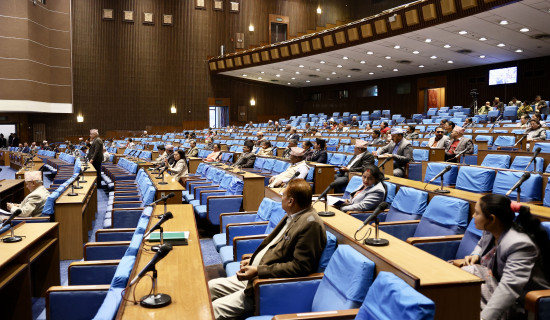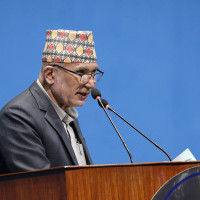- Thursday, 13 March 2025
Rise in dengue cases feared amid monsoon disasters
By Arpana Adhikari,Kathmandu, July 8: With the onset of monsoon, concerns are growing about a potential rise in dengue cases across Nepal, including Kathmandu.
The combination of rainwater and hot weather poses significant public health challenges, as this season creates an ideal environment for dengue-carrying mosquitoes.
Dengue cases are already increasing, with 73 districts reporting infections and 340 new cases recorded in last 33 days (between June 1-July 3).
Only four mountainous districts, Mustang, Humla, Jumla, and Dolpa, have not reported any cases so far.
According to data from the Epidemiology and Disease Control Division (EDCD) of the Ministry of Health
and Population, 154 new cases were reported nationwide from June 24 to July 3, including 18 in Kathmandu.
Similarly, eight cases were reported in Jhapa, seven each in Palpa and Chitwan, four in Makwanpur, three each in Tanahun and Okhaldhunga, and two each in Doti and Sindhupalchowk.
Dr. Gokarna Dahal, Chief of the Vector Borne Disease Control Section at EDCD, stated that although dengue had not reached outbreak levels in any district, the risk of dengue had increased with the onset of monsoon.
This season creates ideal breeding conditions for the Aedes mosquito, the primary carrier of the dengue virus, he informed.
He said, “It is not that a dengue fever increases immediately after the beginning of monsoon rains. However, the stagnant rainwater accumulating in open containers, puddles, and other receptacles provides breeding spots for mosquitoes, with results typically seen after eight to 10 days.”
According to Dr. Dahal, Nepal saw a significant number of dengue cases in June, last year with 1,026 cases reported.
“However, this year, only 317 dengue cases were reported during the same period, possibly due to the later arrival of the monsoon compared to previous years,” he added.
The delayed monsoon could shorten the favourable season for dengue outbreak this year, as infections typically decrease after mid-October, he claimed.
When questioned about the preventive measures, Dr. Dahal assured that the division was well-prepared, having coordinated with provincial and local authorities, ready action plans and provided technical expertise to prevent outbreak.
According to him, the division had the technical expertise to support both provincial and local levels. “We have reached all 753 local levels and asked local authorities to mobilize communities for search and destroy campaigns to eliminate breeding sites,” he said.
Stating that they had communicated with health authorities at the provincial levels, he said they had prepared action plans outlining the roles of federal, provincial, and local governments, as well as the month-by-month activities to prevent a dengue outbreak.
The division has also assisted health facilities in operating fever clinics to deal with dengue patients if required, said Dr. Dahal. Considering the increasing risk of dengue in monsoon, the public is advised to stay vigilant and follow preventive measures to curb the spread of dengue during the monsoon season. People are urged to eliminate standing water, cover water storage containers, clear clogged drains and gutters, use mosquito repellents, wear protective clothing, and spray insecticides in dark corners.
Dengue records in Nepal
From January to May this year, Nepal reported 1,082 dengue cases, an increase from 779 cases during the same period last year. By July 3, the total number of dengue cases reached 1,432.
Of this, Bagmati Province reported the highest number of cases with 482, followed by Koshi Province with 350 cases, Gandaki with 212 cases, Lumbini with 171 cases, Sudurpaschim with 159, Madhes with 38 cases, and Karnali with 20 cases. So far, Kathmandu has witnessed the highest number of dengue cases this year with 159, followed by Jhapa with 120 cases, Chitwan with 83 cases, Makwanpur with 65 cases.






copy-original-thumb.jpg)









